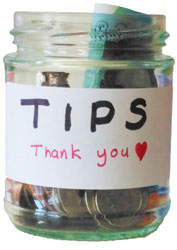Columba (c.521 - 97)
Theology on the Web helps over 2.5 million people every year to find high quality theological resources that will help to equip them to serve God and to know Him better (2 Timothy 2:15). Like other websites that provide free services, it is dependent on donations to enable it to grow and develop and only 0.004% of visitors currently do so. If you would like to support this site, please use one of the options to the right of this message.
Synopsis
COLUMBA, St., or Columbkille; b. at Gartan, County Donegal, 7th December, 521: d. at Iona, Whitsunday, 9th June, 597. Like many of the Celtic saints, he was of princely descent and this, no doubt, contributed to his influence, and perhaps to the blemishes, as well as to the virtues, of his character. He was educated in part under St. Finnian of Moville, and in part under St. Finnian of Clonard, from whose school sc mauy noble missionaries sprang, lie early gave himself to mission - work in his native country, and, previous to his departure from it, had founded many religious houses - monasteries in form, Christian colonies in reality - in the midst of a still barbarous people. The chief of these were Derry, founded in 545, and Durrow. erected in 553. The cause usually assigned for his expatriation from Ireland is the part he took in a great contest in vindication of the right of sanctuary in his monasteries, and stirring up war against the king who had violated it. For this he is said to have been excommunicated, and to have been enjoined as a penance, or to have voluntarily consented, to go into exile, that he might gain for Christ as many from among the Pagans as he had occasioned the loss of among the Christians of Ireland. But he was thoroughly actuated by the missionary spirit, then so characteristic of his countrymen; and his expatriation is more likely to have been prompted by this, and desire to sustain and pro-mote the cause of Christianity in Alban, which seemed to be threatened by the misfortunes of the Dalriad Scots under his relative, King Conal. With twelve like-minded companions, he sailed from Derry in 563, in a currach, or skiff, of wicker-work covered with hides; and touching first at Colonsay, and then, according to some, at the chief fort of his relative on the mainland, he passed on to the little island since made famous by his residence and labors, - the Island of Hy, lona, or, as Dr. Reeves says it should be written, Iova... Bede says that this island was presented to him by the Picts; but the Irish annalists claim the credit of the gift for his relative, the king of the Dalriad Scots. Probably the concurrence of both was sought for the greater security of the infant establishment as a home for himself and his companions, a centre of missionary work among surrounding Pagans, and a shelter for such converts as might desire to lead a more thorough Christian life than they could among their Pagan relatives. After erecting a humble monastery, according to the custom of his country, he set himself to gain for Christ the nearer Pictish tribes. Having met with some success among these, he next essayed to visit Brude, the king of the whole nation, in his fort by the Ness, to make known the truth to him. We may dismiss as legendary the details of his biographer as to the miracles he wrought to secure access to the reluctant king, believing, with Bede, that it was his teaching and holy life that ultimately gained for him the hearts of the king and the nation; and holding that the real miracle needed was his steadfast faith in the Master he served, and unwearying devotion to that Master’s work. In his first visits he may have addressed the Picts through an interpreter; and he had among his companions at least two of Iro-Pictish descent, Comghall and Cainnech, who would be able as well as acceptable interpreters to the chiefs of this nation. But the Pictish dialect was so nearly allied to his own, that he could have no difficulty in acquiring it. With the aid of his companions he strengthened and confirmed the Christian Scots, and ultimately won over to the Christian faith the Picts of the North, as well as the tribes on the banks of the Tay, and even the inhabitants of Fife, once partially evangelized by St. Ninian. He founded among them, and in the islands of the West and North, religious houses, - little Christian colonies, - all in subordination to the mother-house of lona, and under his own direction. His religious establishments in Ireland also continued under his guidance, and were occasionally visited by him. One visit he paid to Ireland in the year 575 was especially noteworthy, as he took with him Aidan, whom he had inaugurated as successor to Conal in the kingdom of the Argyllshire Scots, and secured his more entire independence of Ireland. The evening of his days was passed in his island home, and the closing scene was particularly touching. The day before he died, ascending the hill which overlooked the monastery and its little farm, he stood surveying it for some time, and, lifting up both his hands, bestowed on it his parting blessing. Returning to his hut, he resumed his daily task in transcribing the Psalter, and proceeded to the place where it is written, "They that seek the Lord shall not lack any good thing." "here," he said at the close of the page, "I must stop: what follows let Baithene write;" indicating him apparently as his successor. After some time he lay down to rest; but, when the bell for matins rang, he hastened to the church, and, ere the brethren could join him, he had fainted before the altar. Unable to speak, he made a feeble effort once more to raise his right hand to bless them, and, with joy beaming in his face, passed to his rest and reward.
Columba was "of lofty stature and noble bearing. He could express himself with ease and gracefulness, and had a clear, commanding voice." "He was a man of quick perception anti great force of character, - one of those masterful minds which mould and sway others by mere force of contact." His faith in its essence was that of the church of his day, though by his isolation he have been preserved from some of the errors which were already creeping in elsewhere. He had an intense love for the word of God, and spent much time in reading, studying, amid copying it. He gave much time also to prayer, and to the guiding of the communities which put themselves under his care, endeavoring to train them in useful arts as well as in Christian knowledge. At times he failed to curb an imperious temper, and inspired with awe, not only his enemies, but his votaries, as if his motto were that afterwards appropriated by his adopted country, - "Nemo me impune lacessit." But all in all his character was a singularly noble one, and he deserves to be held in lasting remembrance as the Apostle of Caledonia. Twenty-four churches or other religious foundations are said by Dr. Reeves to have been dedicated to him in Pictland, and thirty-two in other parts of Scotland, and thirty-seven in Ireland. Three Latin hymns of considerable beauty are attributed to him; and in the ancient Irish Liber Hymnorum, in which they are preserved, there is also a preface to each, describing the occasion on which it was composed. Some Irish poems have also been ascribed to him, but apparently without so satisfactory evidence, though they are undoubtedly ancient.
Alex F. Mitchell, "Columba, St." Philip Schaff, ed., A Religious Encyclopaedia or Dictionary of Biblical, Historical, Doctrinal, and Practical Theology, 3rd edn, Vol. 1. Toronto, New York & London: Funk & Wagnalls Company, 1894. pp. 515-516.
Primary Sources
Secondary Sources
Related Subjects
 |
|
 |
|
 |





 St Adomnan of Iona, Life of St Columba, new edn.
Richard Sharpe, translator. Harmondsworth: Penguin Books, 1995. Pbk. ISBN:
0140444629. pp.432.
St Adomnan of Iona, Life of St Columba, new edn.
Richard Sharpe, translator. Harmondsworth: Penguin Books, 1995. Pbk. ISBN:
0140444629. pp.432.![William Beveridge [1864-1937], Makers of the Scottish Church. Handbooks for Bible Classes and Private Students.](https://missiology.org.uk/images/books04/makers-of-the-scottish-church_beveridge-tb.jpg) William Beveridge [1864-1937], Makers of the Scottish Church. Handbooks for Bible Classes and Private Students. Edinburgh: T & T Clark, 1908. Hbk. pp.212.
William Beveridge [1864-1937], Makers of the Scottish Church. Handbooks for Bible Classes and Private Students. Edinburgh: T & T Clark, 1908. Hbk. pp.212.  James Calder MacPhail [1821-1908], Columba, Founder of Iona, The Evangelical Succession. A Course of Lectures Delivered in St. George's Free Church Edinburgh, 1881-1882. Edinbugh: MacNiven & Wallace, 1882. Hbk. pp..85-138.
James Calder MacPhail [1821-1908], Columba, Founder of Iona, The Evangelical Succession. A Course of Lectures Delivered in St. George's Free Church Edinburgh, 1881-1882. Edinbugh: MacNiven & Wallace, 1882. Hbk. pp..85-138. ![Joseph Barber Lightfoot [1828-1889], Leaders in the Northern Church](images/books3/leaders-of-the-northern-church_lightfoot-tb.jpg) Joseph Barber Lightfoot [1828-1889], Leaders in the Northern Church. Sermons Preached in the Diocese of Durham, 2nd edn.. London: MacMillan & Co., 1899. Hbk. pp.221.
Joseph Barber Lightfoot [1828-1889], Leaders in the Northern Church. Sermons Preached in the Diocese of Durham, 2nd edn.. London: MacMillan & Co., 1899. Hbk. pp.221.  Iain MacDonald, ed. St Columba. Floris Books,
1992. Pbk. ISBN: 0863151434. pp.64.
Iain MacDonald, ed. St Columba. Floris Books,
1992. Pbk. ISBN: 0863151434. pp.64. John Marsden, The
Illustrated Life of St Columba, 2nd edn., John Gregory, translator. Floris
Books, 1995. Pbk. ISBN: 0863152112. pp.239.
John Marsden, The
Illustrated Life of St Columba, 2nd edn., John Gregory, translator. Floris
Books, 1995. Pbk. ISBN: 0863152112. pp.239. Alfred P. Smyth, Warlords and Holy Men:
Scotland AD 80-1000. The New History of Scotland, 1. Edinburgh: Edinburgh
University Press, 1989. Pbk. ISBN: 0748601007. pp.84-115.
Alfred P. Smyth, Warlords and Holy Men:
Scotland AD 80-1000. The New History of Scotland, 1. Edinburgh: Edinburgh
University Press, 1989. Pbk. ISBN: 0748601007. pp.84-115.



